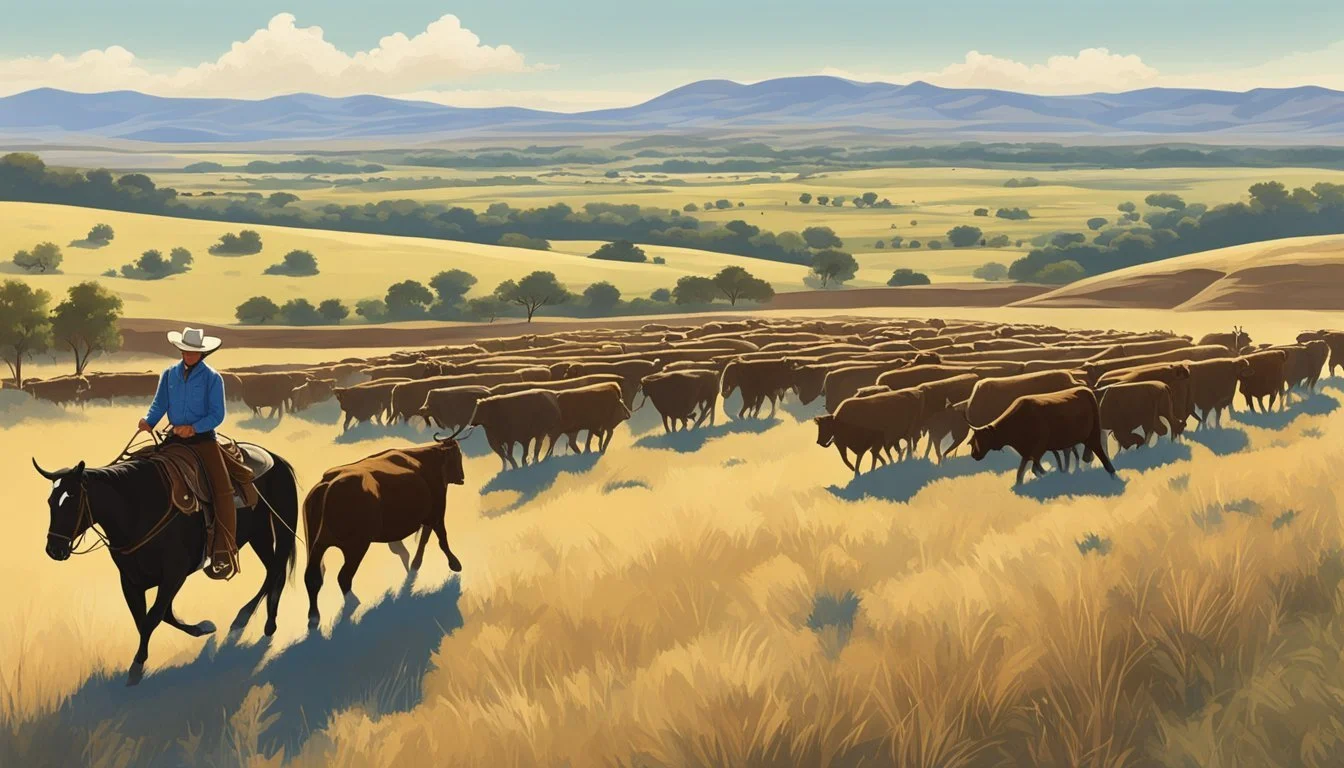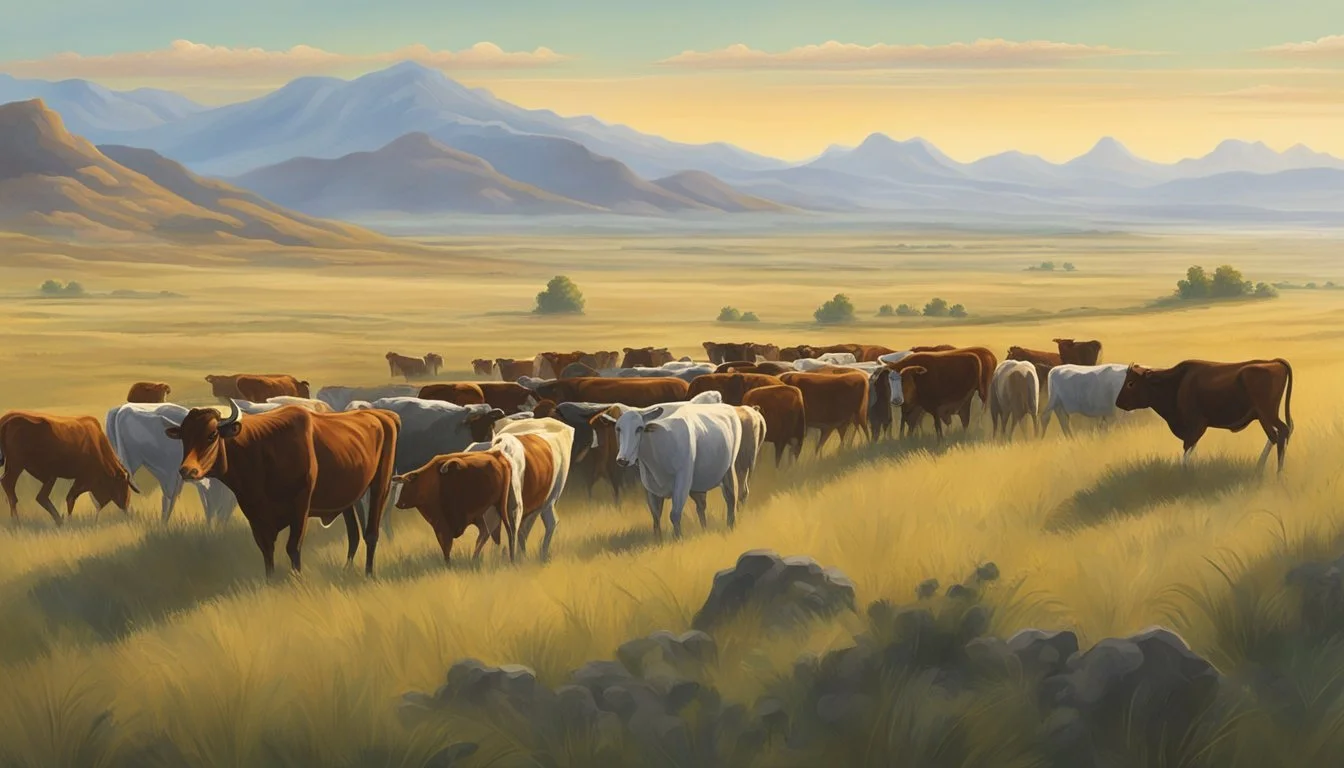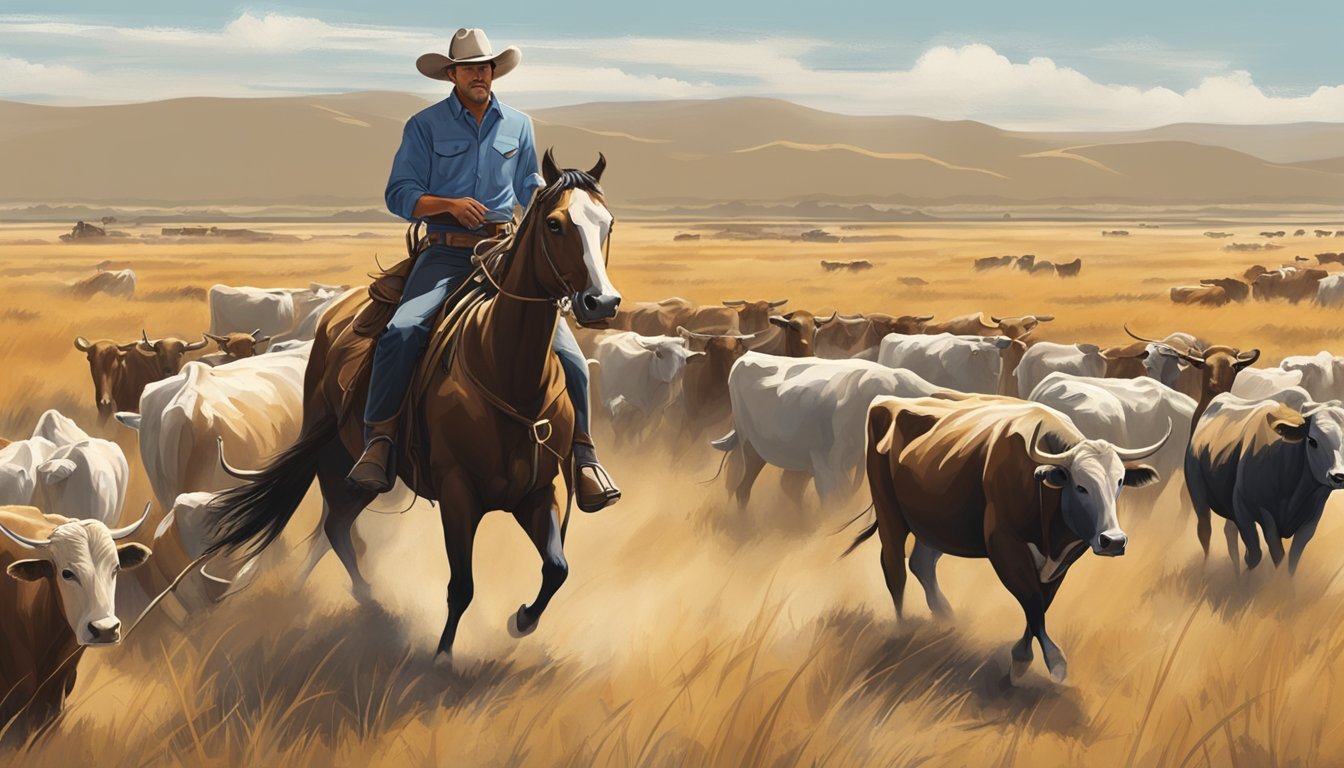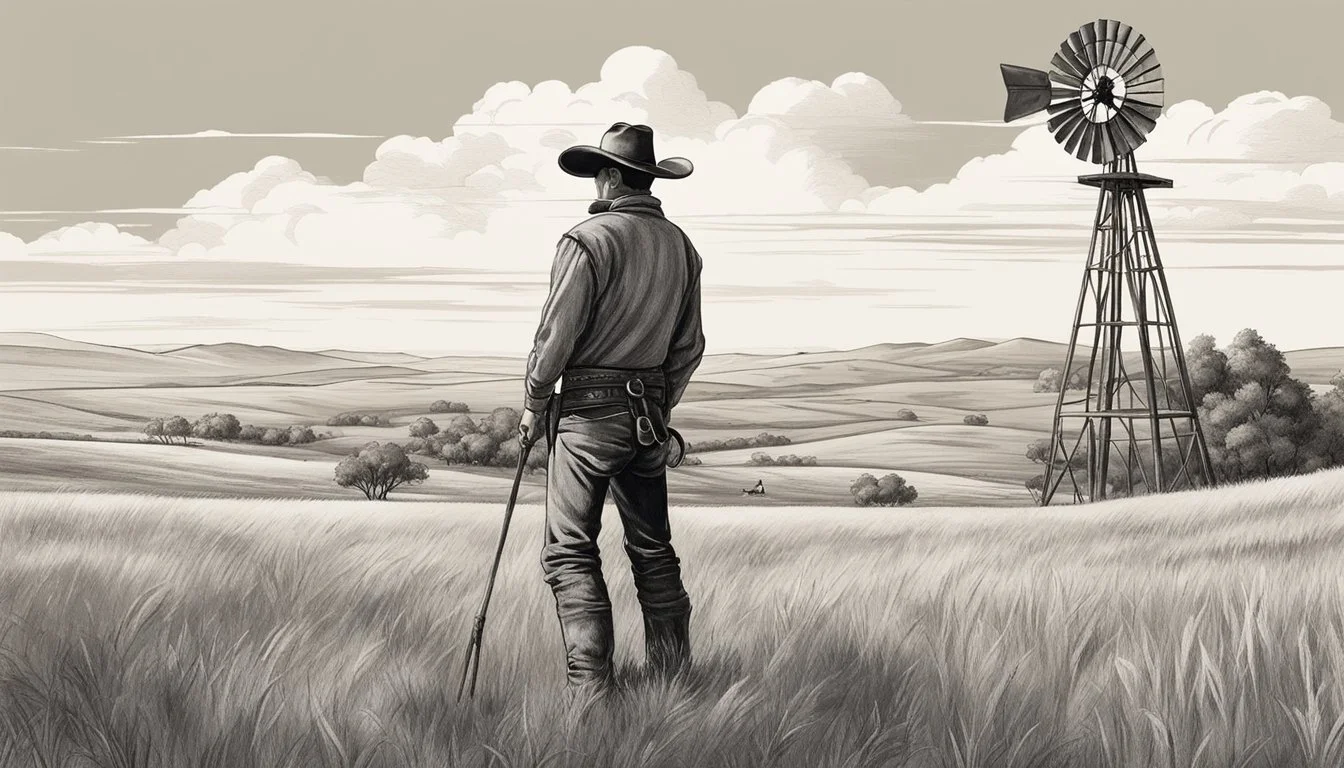The Texas Cowboy's Role in Conservation
Stewards of the Land
The Texas cowboy has long been an emblem of the state's rich history and cultural identity. Stemming from a lineage that traces back to Spanish colonial vaqueros, cowboys in Texas have become synonymous with the rugged spirit of the West. Beyond the romanticized image of horsemanship and cattle drives, there exists a vital connection between cowboys and the natural environment. Responsible for vast stretches of terrain that sustain the cattle industry, these cowboys have a foundational role in land stewardship and conservation practices essential for maintaining the health of Texas ecosystems.
In the face of modern challenges such as population growth and land fragmentation, the conservation efforts practiced by Texas ranchers are more important than ever. Utilizing techniques that promote soil health and carbon retention, they effectively manage grasslands not only for cattle production but also for the benefit of wildlife and the preservation of water resources. The stewardship practices employed extend beyond financial incentives; they reflect a deep understanding of the interconnectedness of land, resources, and the people who manage them. With the majority of Texas land held privately, the actions of these landowners have a profound impact on conservation and stewardship efforts across the state.
The stewardship role of the Texas cowboy is thus a testament to an evolving legacy that blends tradition with ecological responsibility. Their daily management decisions on the ranch reflect a broad commitment to preserving the land for future generations while upholding the cultural heritage that cowboys represent. This intersection of culture, conservation, and land stewardship continues to shape the landscape of Texas and the identity of those who have taken up the mantle of the cowboy.
Historical Development of the Texas Cowboy
The Texas cowboy, an emblem of perseverance and grit, has origins that trace back to Spanish influences and evolved significantly through and after the Civil War.
Origins of Cowboy Culture
Cowboy culture in Texas originated long before it became emblematic of the American West. The earliest cowboys were indigenous people and Spanish settlers, who managed cattle on vast tracts of land. These cattle herding practices laid the groundwork for the cowboy way of life, integral to Texas history.
Spanish Influence and the Vaqueros
The vaquero, the precursor to the American cowboy, emerged from Spanish influence in the 18th century. Spanish missionaries and settlers introduced cattle to the region, and the skills in herding and horsemanship were honed by Mexican vaqueros. Their techniques in roping and ranch management became foundational to the cowboy profession.
Evolution Through the Civil War
During the Antebellum period, Texas boasted a large population of free-range cattle, a remnant of Mexican rule. The Civil War, however, dramatically interrupted the cattle industry, leaving vast herds untended. Post-war, the need for skilled cattle handlers surged, setting the stage for the cowboy's rise in the Reconstruction era.
Post-Civil War Developments
After the Civil War, the cowboy's role expanded significantly as Texas recovered and ranching resumed. Cowboys, including a significant number of Black cowboys, drove cattle across the state to railheads for shipment to northern markets. This period cemented the cowboy's place not only in Texas but as an iconic figure of the American West, with some later inducted into the National Cowboy Hall of Fame.
Cattle Ranching and Herding Practices
The effectiveness of cattle ranching and herding practices has been pivotal in shaping the landscape and economy of Texas. Techniques honed over centuries have incorporated both Spanish and American influences, advancing herd management and environmental stewardship.
Breeds and Herd Management
The Texas Longhorn is arguably the most iconic breed associated with Texas ranching, celebrated for its hardiness and ability to thrive on the sparse grasses of the Texas plains. However, breeds such as Hereford and Angus have also been introduced to improve meat quality. Herd management is crucial; it involves selective breeding, monitoring for disease, and ensuring sustainable grazing to prevent land degradation.
Breed Selection: Focus on Texas Longhorns, Herefords, Angus
Population Management: minimize overgrazing, maintain herd health
Techniques of Cattle Herding
Herding techniques are a blend of traditional methods and modern practices. The use of the lasso and horseback riding remain fundamental skills, reflecting a heritage of Spanish horsemanship and cattle-herding practices. Ranchers now also utilize all-terrain vehicles for efficiency and to cover the vast expanses of ranches more effectively.
Key Techniques: Use of lasso, horseback riding, vehicle use
Skill Development: Horsemanship, lasso proficiency, vehicle handling
The Role of Trail Drives
Trail drives were historically crucial in moving cattle to railheads for wider distribution and were central to the rancher's work. While modern transport has overtaken the trail drive, the echoes of this practice inform current long-distance livestock transport strategies, with a continued emphasis on avoiding undue stress for the cattle.
Historical Significance: Movement to railheads, economic importance
Modern Transport: Adaptations for animal welfare, logistical efficiency
Innovations in Ranching
Innovations in ranching have been instrumental in conservation and land stewardship. Techniques such as rotational grazing help maintain the health of the grasslands. Ranchers have also pioneered branding practices to help identify and track cattle, reducing loss and theft.
Conservation Practices: Rotational grazing, sustainable herd sizes
Identification and Tracking: Branding, modern tagging systems
The Cowboy's Role in Land Management
Texas cowboys have long been integral to managing vast rangelands, ensuring that these areas remain productive and sustainable for agricultural use while also conserving the health of ecosystems. Their practices reflect a balance between the demands of ranching and the preservation of the land that supports it.
Grazing Strategies and Grassland Preservation
Cowboys implement targeted grazing strategies to prevent overgrazing and preserve grassland health. By rotating their herds through different pasture lands, they allow grasses the essential recovery time needed to grow back, which maintains soil quality and biodiversity. Adaptive grazing management takes into account the variability of weather and grass growth rates, making adjustments as necessary to sustain the vital grassland ecosystem.
Water Conservation and Management
Ranchers in Texas are keenly aware of the need for water conservation, implementing strategies that reduce water usage and improve water quality on their lands. They might construct small impoundments or tanks to capture rainwater, reducing reliance on streams and rivers. They are also likely to use strategic watering locations to minimize soil erosion and trampling around naturally occurring water sources, ensuring that water remains available and uncontaminated for both livestock and wildlife.
Impact of Fencing and Land Division
With the introduction of barbed wire in the late 19th century, cowboys began fencing vast tracts of Texas land, leading to profound changes in land use and management. Fencing allows for more controlled grazing, which can be optimized for sustainability and to prevent overuse of sensitive areas. However, such divisions also necessitate careful planning to maintain wildlife corridors and prevent habitat fragmentation. Cowboys act as stewards, considering the impacts of land division, and strive to ensure that fences serve the dual purposes of supporting ranching business needs and maintaining the ecological integrity of the range.
The Economic Impact of the Texas Cowboy
The Texas cowboy has historically been a central figure in the development of the North American cattle industry, significantly influencing transportation infrastructures and contributing to entertainment economies through rodeos.
Contribution to the Cattle Industry
The cowboy's role in the cattle industry was pivotal during the cattle drive era. In the 1870s and 1880s, cowboys herded millions of cattle from Texas to railheads in Kansas, marking a substantial economic contribution to Texas and the American West. This exchange fortified Texas beef as a staple commodity within the economy, generating wealth that would ripple through other sectors.
Transportation and Urban Impact
Cowboys influenced the growth of transportation networks, particularly the expansion of railroads, which connected urban centers across the American frontier. The demand for efficient cattle transport led to railroad construction toward Texas, bridging rural economies with burgeoning urban markets. These railroads catalyzed urban development and facilitated broad economic growth for cities as gateways to cattle distribution.
Modern Rodeos and Entertainment Economy
Rodeos have formalized aspects of cowboy culture into a lucrative entertainment industry. Modern rodeos draw crowds in the thousands, turning a professional lens on skills honed during historical cattle drives. These events generate significant revenue for local economies and perpetuate the heritage of the cowboy, transforming their traditional duties into a celebrated sport.
Cultural and Social Legacy
The Texas cowboy's contribution to conservation and land stewardship has left a cultural and social legacy that is deeply ingrained in the American West, influencing festivals, museums, arts, and the modern Texan identity.
Rodeos and Festivals
The rodeo originated from the competitive spirit and skills necessary for cattle herding on the long drives along routes like the Chisholm Trail and Goodnight-Loving Trail. Rodeos showcase traditional cowboy skills such as roping and riding, and they remain a popular attraction in Texas. Festivals often accompany these events, celebrating the state's cattle ranching legacy and cowboy culture, which includes distinctive attire like chaps and boots, and represents the rugged individualism of the West.
Representation in Museums and Arts
Museums across Texas, such as the King Ranch Museum, founded by Richard King, commemorate cowboy history and their role in transforming the Great Plains. They offer educational insights into practices like open-range ranching which was adapted from vaquero techniques. Arts within the region reflect the life of Kineños, or King's people, originally brought to Texas by Gregorio de Villalobos, blending cowboy culture with that of Native Americans and other influences.
Impact on Modern Texas Identity
Cowboy culture profoundly shaped the identity of modern Texas. It embodies the ethos of the American West, characterized by resilience, independence, and a deep connection to the land. This identity is not just historical; it is actively manifesting in land stewardship practices which honor the legacy of cowboys by promoting sustainable use of the land for future generations.
Conservation and Future Challenges
Conservation in Texas encompasses a synergy of agriculture, sustainability, and stewardship. The state's terrain presents a mosaic of challenges where the ranching community continually adapts to manage the land responsibly. These landowners, often donning a Stetson, are not merely cowboys but stewards who engage in practices that maintain soil health and protect water resources.
Sustainable Ranching
Historically, ranchers in South Texas and beyond have played a significant role in land conservation. Their efforts converge on a key goal: to strike a balance between productive agriculture and ecological resilience. They cultivate a range of practices like rotational grazing to support the land's capabilities and biodiversity.
Soil Conservation: Techniques to prevent erosion and maintain fertility.
Water Management: Systems to utilize and conserve water efficiently.
The Role of Leadership
Leadership and law enforcement intersect when it comes to enforcing regulations that protect these ecosystems. With institutions like Texas A&M University contributing research and education, there is a dynamic flow of knowledge to drive these efforts.
Integrity and Education: The foundation of community-based conservation.
Collaboration: Working together with agencies for better management strategies.
Challenges Ahead
Looking forward, challenges such as climate change and expanding human development pose significant risks to Texas' natural landscapes. A community's resilience will be tested as they navigate changes in climate patterns and balance the needs of wildlife with that of human populations.
Adaptation: Adjusting management techniques in response to ecological shifts.
Policy and Law: Evolving regulations to meet emerging conservation challenges.
Texas' conservation relies on a collective commitment to stewardship, where integrity, leadership, and a deep-rooted respect for the land are imperative for the longevity of its unique ecosystems.
Key Figures and Influential Ranches
The transformation of Texas' land and wildlife conservation can be largely credited to key figures in ranching and the operations of influential ranches that have fostered sustainable practices for generations.
Pioneering Ranchers and Their Legacy
Richard King was a pivotal figure in Texas ranching, establishing the King Ranch in the 1850s. Stemming from a logistics venture with his partner Mifflin Kenedy, King purchased tracts of land near the Rio Grande and utilized innovative ranching techniques that dramatically shaped the Texas ranching industry. He, alongside Gregorio de Villalobos, introduced the Kineños—a group of Mexican cowboys who became the backbone of King Ranch operations, blending open-range ranching practices with structured management.
Notable Pioneering Ranchers:
Richard King: Founder of King Ranch
Gregorio de Villalobos: Worked with Spanish missionaries, instrumental in ranching genesis
Richard King's legacy includes the development of King Ranch into a symbol of innovation and conservation, making it an epitome of how ranching could align with land and animal stewardship.
Legendary Ranches and Their Operations
The Great Plains of Texas were home to titanic ranches like King Ranch, which at its peak encompassed over one million acres, an area larger than the state of Rhode Island. King Ranch's adoption of strategic breeding, wildlife management, and progressive land stewardship practices have been instrumental in the conservation of Texas' landscapes.
Legendary Ranches:
King Ranch: Spanning 825,000 acres, a leader in ranching innovation
Matador Ranch: Once a million-acre operation, significant in historical land conservation efforts
These ranches not only provided substantial supplies to burgeoning markets via routes like the Goodnight-Loving Trail but also showcased the potential of integrating environmental consciousness with cattle ranching. Through their enormous-scale operations across the open range, they have played a central role in shaping the narrative of land preservation in the West.
Conclusion
The legacy of the Texas cowboy is deeply intertwined with principles of conservation and land stewardship. This enduring symbol of American history represents more than a cultural icon; the cowboy epitomizes leadership and integrity in the management of some of the country's most precious resources: the land and its biodiversity.
Leadership: Texas cowboys have taken a leadership role in sustainable land management, recognizing the value of a balanced ecosystem for both wildlife and agricultural productivity.
Integrity: Cowboys operate according to a code that marries hard work with a staunch respect for nature, ensuring that the land is well cared for and protected for future generations.
In Texas, where a significant proportion of the land is privately owned, the impact of responsible land stewardship practiced by ranchers is particularly crucial. They are stewards in the truest sense, contributing to conservation efforts through practical, daily actions. Their practices have implications for soil health, carbon sequestration, and preservation of grasslands.
As representatives of a time-honored culture, Texas cowboys demonstrate that the health of the land and profitability of ranching are not mutually exclusive. On the contrary, they show that the two can coexist, supporting a vision of conservation that benefits all: people, wildlife, and the environment. The conservative use of resources ingrained in cowboy culture ensures that the Texas heritage of ranching and conservation will persist, fostering a resilient and sustainable future for the land they so deeply cherish.








